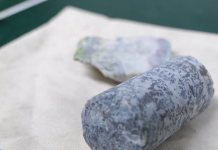YINCHUAN: On the vast Xizan goji berry plantation in Zhongning County, northwest China’s Ningxia Hui Autonomous Region, the berries hang in bright red bunches amid green leaves. About 12 years ago, this whole area was just an expanse of parched and dusty semidesert.
Goji berries, also known as wolfberries, are a specialty in Ningxia and famous for their nutritional value. China’s history with this particular berry dates back thousands of years. In ancient herbal medicine, its functions include protecting the liver, improving eyesight and conserving strength.
“Goji plants can grow in a range of soil types, even in deserts,” said Nie Zhengbao, deputy general manager of Xizan Goji Berry Company Ltd., which owns the plantation. “The semideserts in Zhongning, with weakly alkaline soil, were ideal for planting goji berries. So we chose this place for our plantation.”
However, Zhongning County has dry weather and low rainfall, and its only water source is the Yellow River. Providing sufficient irrigation for this 860-hectare plantation would be a major task, an essential problem to be solved if berries were to be grown on a large scale.
To save water, the company decided to reduce the planting density of the berry trees. To improve the efficiency of water use, it introduced a drip irrigation technology from Israel in 2014, replacing the traditional flood irrigation method. –Agencies





